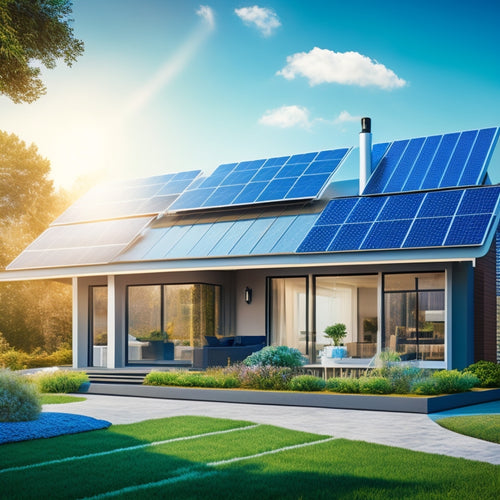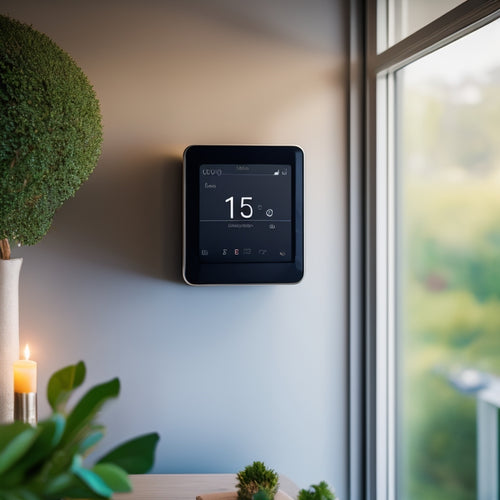
Charge Up Your Ride: Electric Vehicle Essentials
Share
To maximize the benefits of electric vehicle ownership, it's important to understand the different charging methods, including Level 1, Level 2, and Quick Charging. Charging infrastructure has greatly expanded, making it easier to locate charging stations using navigation apps and dedicated EV charging apps. Optimizing your charging routine is also vital, involving strategic planning to minimize costs and reduce strain on the electrical grid. By adopting efficient charging habits, such as charging during off-peak hours, you can maximize convenience and cost savings. As you explore the world of electric vehicles, discover how to harness the full potential of your ride.
Key Takeaways
• Electric vehicles can be charged using Level 1, Level 2, and Quick Charging methods, each with varying speeds and installation requirements.
• Drivers can easily locate nearby charging stations using navigation apps like Google Maps and Waze, or dedicated EV charging apps like PlugShare and ChargeHub.
• Strategically planning and adapting your charging schedule can minimize costs and reduce strain on the electrical grid by charging during off-peak hours.
• Many electric vehicles come with scheduling functions, allowing owners to optimize their charging routine for convenience and cost savings.
• Choosing the right charging method depends on the vehicle's charging capacity and household electrical system, requiring consideration of Level 1 and Level 2 charging options.
Charging Methods Explained
Electric vehicles can be charged using three primary methods: Level 1, Level 2, and Quick Charging, each offering varying speeds and convenience.
Level 1 charging, the slowest method, uses a standard household outlet and requires no setup or modifications.
Level 2 charging, faster than Level 1, is commonly found in commercial parking lots and may require professional installation for home use. When deciding between Level 1 and Level 2 for home installation, consider the vehicle's charging capacity and household electrical system. Level 2 charging may be preferred for faster replenishment, but installation costs and electrical system upgrades may be necessary.
Understanding the differences between Level 1 and Level 2 charging can help electric vehicle owners make informed decisions about their charging needs.
Finding Charging Stations
As the availability of charging infrastructure continues to expand, locating a convenient and suitable charging station has become increasingly effortless. With the expansion of charging infrastructure, drivers can now easily find a charging station that meets their needs.
Navigation apps and websites provide real-time information on nearby charging stations, making it simple to plan your route and charge your vehicle on the go. Many popular navigation apps, such as Google Maps and Waze, have integrated charging station locators, allowing drivers to find a charging station with ease.
Additionally, dedicated EV charging apps, like PlugShare and ChargeHub, offer extensive directories of charging stations, making it easy to find a charging station near you.
Optimizing Your Charging Routine
By strategically planning and adapting your charging schedule, you can minimize costs, reduce strain on the electrical grid, and maximize the convenience of owning an electric vehicle.
To optimize your charging routine, consider charging during off-peak hours when electricity rates are lower. This not only saves you money but also reduces the strain on the grid during peak hours.
By scheduling your charging sessions, you can take advantage of charging efficiency and cost-saving benefits. Many electric vehicles come equipped with scheduling functions, allowing you to program your charging sessions during non-peak hours.
Frequently Asked Questions
How Does Battery Health Impact Electric Vehicle Charging Speed?
Battery health, affected by battery degradation and charging cycles, influences electric vehicle charging speed. As batteries degrade, charging capacity diminishes, slowing down charging speeds, emphasizing the importance of proper battery maintenance for peak charging efficiency.
Can I Charge My Electric Vehicle in the Rain or Snow?
Electric vehicles are designed with weather resistance in mind, ensuring safe charging in rain or snow. Manufacturers implement safety precautions, such as waterproof connectors and protective casings, to prevent electrical shock and maintain charging efficiency in various weather conditions.
Are Public Charging Stations Safe to Use With My Vehicle?
Did you know that 98% of public charging stations meet rigorous safety standards? Public charging stations are safe to use with your vehicle, thanks to strict Station Security measures and Charging Etiquette guidelines, ensuring a secure and efficient charging experience.
Can I Charge My Electric Vehicle With Solar Power at Home?
Yes, you can charge your electric vehicle with solar power at home, leveraging Solar Savings and seamless Home Integration. Install a solar panel system, connect it to a compatible EV charger, and enjoy renewable energy and reduced electricity bills.
Will Charging My Electric Vehicle Daily Reduce Its Lifespan?
Did you know that 80% of electric vehicle owners charge their vehicles daily? Charging your electric vehicle daily will not reduce its lifespan, as modern batteries are designed to handle frequent charging, alleviating battery anxiety and making daily charging a convenient, guilt-free habit.
Related Posts
-

7 Best Cool Roof Rebates for Energy-Savvy Homeowners
You're an energy-savvy homeowner looking to install a cool roof, and you're wondering which rebates can help you save...
-

Smart Energy: Greener Homes With Connected Power Devices
You can control and optimize your energy consumption with smart energy devices, reducing your carbon footprint by up ...
-

What Are Natural Clay Paints for Green Home Interiors?
You're about to uncover a game-changing alternative to synthetic paints that not only enhances the aesthetic of your ...


